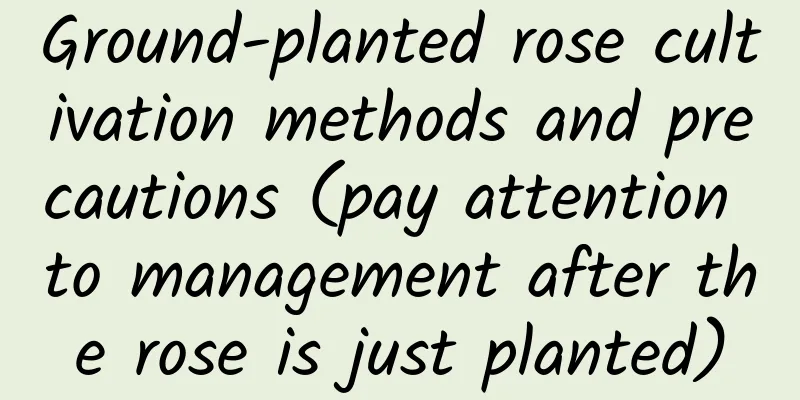How to grow petunia

1. Breeding environment1. Soil: Loose, fertile and well-drained soil is suitable for growing petunias. It is afraid of too much water, so it is important to choose soil with good drainage. 2. Watering: Water it in moderation, not too dry or too wet. If the soil is too dry, it will wither, and if the soil is too wet, the roots will rot. In summer, when the temperature is high, you should increase the amount of watering appropriately. During the rainy season, you should strengthen drainage measures to ensure that the soil is moist but not dry and there is no water accumulation. 3. Light: It needs sufficient light to grow better. If there is insufficient light, the branches and leaves will easily grow too long. Receiving 12 hours of light a day is not only beneficial to growth, but also will produce more flowers and better quality flowers. 4. Temperature: The temperature suitable for petunia growth is 13-18℃. The minimum temperature cannot be lower than 4℃. Once it is lower than the minimum temperature, it will stop growing. The highest temperature in summer can be 35℃. 2. Breeding Methods1. Propagation by cuttings: Choose pest-free branches and cut off about 10 cm. Sterilize the soil when cutting. Leave about 1.5 cm of cuttings and place them in a place with scattered light. Keep the soil moist. It will take about two weeks to take root and can be transplanted in about a month. 2. Propagation by seeding: When sowing, use a seedling tray and cover it with a thin layer of fine sand. It will germinate in about 2 months. 3. Common pests and diseases1. White mold: large white spots will appear on the leaves, and in severe cases the leaves will fall off. Once discovered, the diseased leaves should be removed in time and sprayed with 600-800 times diluted 75% concentration of thiophanate-methyl. 2. Aphids: The leaves and tender stems of petunias will be attacked. When aphids appear, they should be isolated in time and then sprayed with 1000 times diluted 10% omethoate emulsion. |
Recommend
How to take cuttings of Margaret flowers
Water rooting method Water plugging root inductio...
What is the best month to plant red lentils?
When to plant red lentils Red lentils are usually...
What should I do if the orchid leaves I bought are dehydrated (can the orchid leaves be saved if they are severely dehydrated)
What to do if the leaves of orchids purchased onl...
Is the two-line arrowroot poisonous?
Is the two-line arrowroot poisonous? When talking...
What is the reason for the succulent growth?
1. Insufficient UV rays Why do we talk about ultr...
How to grow hibiscus potted plants well? Hibiscus home cultivation methods and precautions
Hibiscus is suitable for growing in a warm and hu...
Is Begonia bulbous harmful to human body?
Is the plant harmful to humans? This flower is ha...
The efficacy and function of black plum
Efficacy and function Eating black plums can help...
What are the cultivation methods and precautions of purple bamboo plum
Introduction of Purple Bamboo Plum Purple Bamboo ...
How to grow dragon beard orchid
1. Maintenance methods 1. Flower pot selection: I...
What flowers are suitable for growing in Yichun? What are the city flowers and trees?
1. Climate characteristics of Yichun Yichun has a...
Broad bean planting time and technology
Broad bean is an annual or biennial herb of the g...
How to grow the plant
1. Breeding environment (1) Soil: The main requir...
The propagation and maintenance of Polygonum erythrorhizon
How to reproduce red polygonum The common method ...
How to grow carrots
1. Maintenance methods 1. Temperature: Carrots ar...









